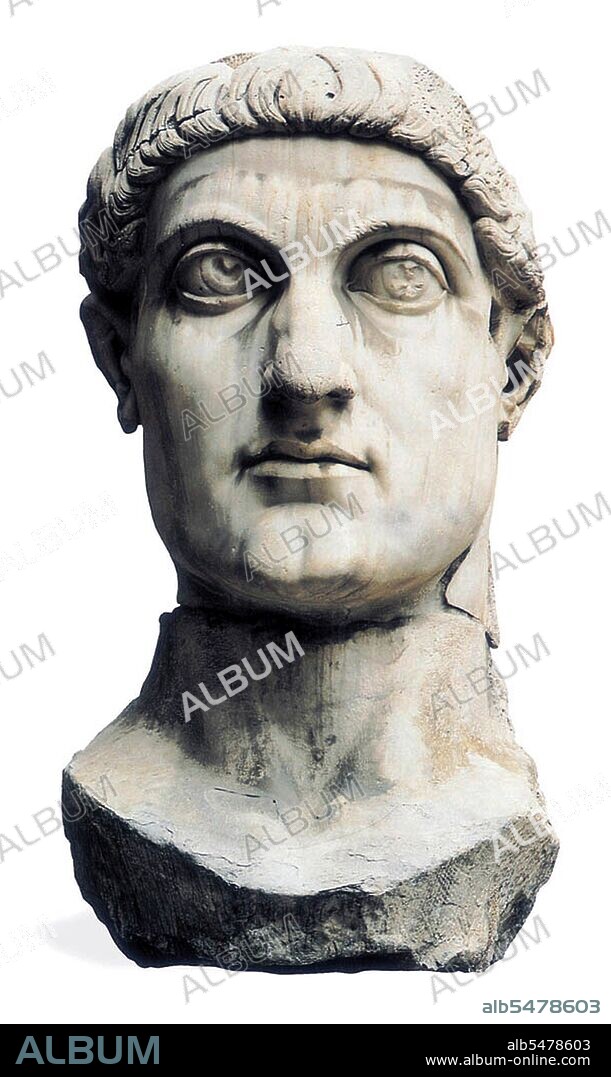alb5478603
Italy: Head of Constantine the Great (Latin: Flavius Valerius Aurelius Constantinus Augustus, c. 27 February 272 – 22 May 337), also known as Constantine I or Saint Constantine, Roman Emperor from 306 to 337 CE

|
Zu einem anderen Lightbox hinzufügen |
|
Zu einem anderen Lightbox hinzufügen |



Haben Sie bereits ein Konto? Anmelden
Sie haben kein Konto? Registrieren
Dieses Bild kaufen.
Nutzung auswählen:

Titel:
Italy: Head of Constantine the Great (Latin: Flavius Valerius Aurelius Constantinus Augustus, c. 27 February 272 – 22 May 337), also known as Constantine I or Saint Constantine, Roman Emperor from 306 to 337 CE
Untertitel:
Siehe automatische Übersetzung
The Colossus of Constantine was a colossal acrolithic statue of the late Roman emperor Constantine the Great (c. 280–337) that once occupied the west apse of the Basilica of Maxentius near the Forum Romanum in Rome. Portions of the Colossus now reside in the Courtyard of the Palazzo dei Conservatori of the Musei Capitolini, on the Capitoline Hill, above the west end of the Forum. The great head, arms and legs of the Colossus were carved from white marble, while the rest of the body consisted of a brick core and wooden framework, possibly covered with gilded bronze. (Acrolithic means 'stone at the extremities'. ) Judging by the size of the remaining pieces, the seated, enthroned figure would have been about 12 m (40 ft) high. The head is about 2 ½ m high and each foot is over 2 m long.
Bildnachweis:
Album / Pictures From History/Universal Images Group
Freigaben (Releases):
Model: Nein - Eigentum: Nein
Rechtefragen?
Rechtefragen?
Bildgröße:
3045 x 5100 px | 44.4 MB
Druckgröße:
25.8 x 43.2 cm | 10.2 x 17.0 in (300 dpi)
Schlüsselwörter:
ANTIKE • CAESAR • CONSTANTINO I EL GRANDE • GESCHICHTE • ITALIEN • ITALIENER • ITALIENISCH • KUNST • PERIODE: ROEM. KAISERREICH • PLASTIKEN • ROEMISCH • ROEMISCHER KAISER • ROEMISCHES REICH • ROM • ROM, KAISERLICHES • RÖMER • RÖMISCH • RÖMISCHE KAISER • RÖMISCHES REICH • SKULPTUR • SKULPTUREN • STANDBILD • STATUE • TECHNIK: SKULPTUR • ZEITGESCHICHTE
 Pinterest
Pinterest Twitter
Twitter Facebook
Facebook Link kopieren
Link kopieren Email
Email
